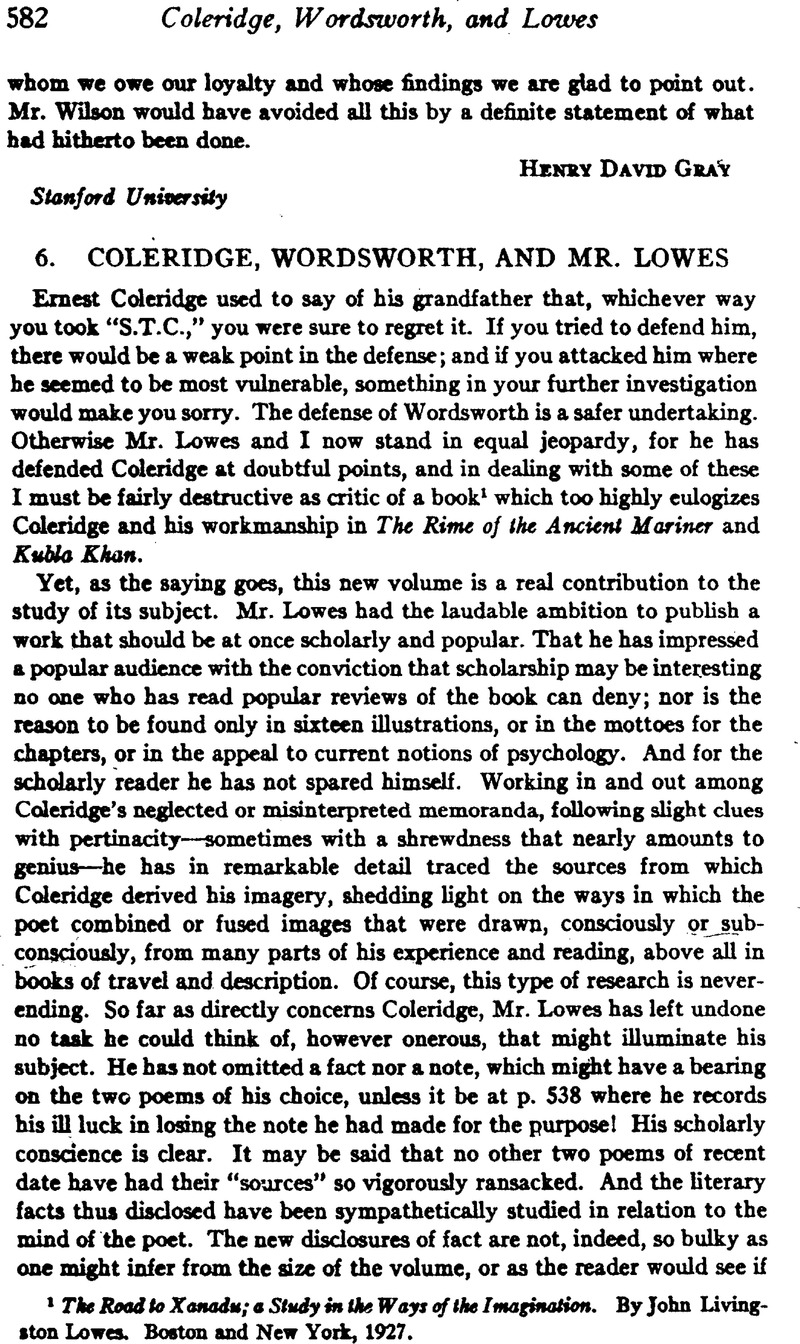Article contents
6. Coleridge, Wordsworth, and Mr. Lowes
Published online by Cambridge University Press: 10 August 2021
Abstract

- Type
- Comment and Criticism
- Information
- Copyright
- Copyright © Modern Language Association of America, 1928
References
1 The Road to Xanadu; a Study in the Ways of the Imagination. By John Livingston Lowes. Boston and New York, 1927.
2 Note at the end of Lyrical I'allads, 1800.
3 Compere Lowes, p. 384: Coleridge “was striking out, as the Note Book shows, from one book to another in directions which seemed to promise contributions.” The reference is to another poem, but the principle is the same.
4 In the account of Price, hereafter cited, Wordsworth is made to say: “We agreed to write jointly a poem, the subject of which Coleridge took from a dream which a friend of his had once dreamt concerning a person suffering under a dire curse from the commission of some crime.” Price does not specify that the person was a mariner; in fact, his evidence, as far as we can trust it, is against the identification. The evidence of Dyce on Cruikshank's dream is more trustworthy.
5 Coleridge probably swelled it from 340 to 658 lines between Feb. 18, when he wrote to Cottle, “I have finished my ballad, it is 340 lines,” and March 23, when “he brought his ballad finished” to the Wordsworths; see Cottle, Early Recollections, I, 307, Dorothy's Journal, I, 14, and Coleridge, Poetical Works, 2 vols., ed. I. H. Coleridge, p. 1048.
6 I naturally tried to see how much use had been made of my own study of Cole-ridge's reading in books of travel, demonology, and so on, and at first thought that my youthful articles of many years ago had mostly escaped the attention of Mr. Lowes, though in the test he shows some enthusiasm for the queerest of them, The Power of the Eye in Coleridge. To judge from the Notes, however, and not from the Index, he hu not missed much. Still, on page 453 he is unaware that any one but H. Coleridge (1906) and Bersch (1909) was ahead of him in comparing Wordsworth with Bartram's Travels; there should be a reference to the Athenœum, London, April 22, 1905, pp. 498 ff. And possibly (p. 517, Note 102) one may learn more from my Glance at Wordsworth's Reading as it appears in Methods and Aims in the Study of Literature, 1915, than in its original shape of eight yean before. For a small item that I had myself forgotten, see the Athenœum, Sept. 5, 1903, p. 328. As for the parallel noted by Mr. Lowes (p. 526) between The Rime 446-51 and Dante, Inferno 21. 25-30, it has been suspected before; I caught it twenty years ago while following up Charles Lamb in Witches and other Night-fears (see Macdonald's ed. of Lamb I, 135).
- 1
- Cited by




